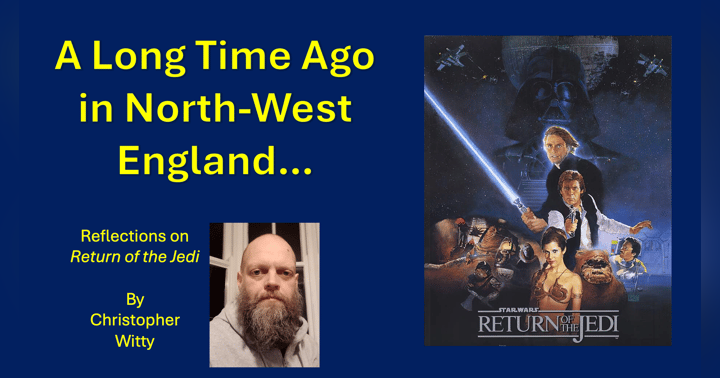The Intersection of Music & Movies: Queen's '39 and Interstellar

I’m not sure if this is everyone’s experience or just my comparative brain at work, but there seem to be occasions where the media I’m consuming comes together in a weirdly synergistic way. I’ll be hyper-focused on a specific film or book, and then I’ll hear a song that just seems to fit perfectly with my current obsession, and thinking about the intersection of the music and the movie or book enriches my experience of both.
For example, when Harry Potter and the Half-Blood Prince came out in 2007, I was listening to Kean’s 2006 album Under the Iron Sea on repeat. As I learned more and thought more on the character of Snape, I began to inextricably link him to the song “A Bad Dream.” Although the song itself is inspired by the WB Yeats poem “An Irish Airman Foresees His Death” (with some of the lyrics pulled straight out of the poem), I couldn’t help associating Snape’s double agent past and forever-alone relationship status with the song. (I figured out the “Snape loves Lily” plot point early, before it was revealed in the final novel, based on the “Snape’s Worst Memory” chapter in HP and the Order of the Phoenix.)
While my interest in the world of Harry Potter has waned (for probably obvious reasons I needn’t get into here, every time “A Bad Dream” pops up on my playlist, I immediately think of sad old Snape and his depressing life choices. There are other examples I could list off, and I’m sure these coincidences are down to the simple human penchant for pattern recognition, but a part of me still likes to believe in a little bit of magic. One of the confluences that allows me to believe in that magic is how I encountered Interstellar and Queen’s song “’39” right around the same time, but completely independent of each other.
It’s helpful to establish that John is a master of creating playlists. The whole time we’ve known each other, he’s been introducing me to new music, starting with mix CD’s back in the early aughts and now with Spotify playlists. The same month that Interstellar came out in theaters, I was busily participating in Nanowrimo (National Novel Writing Month). One of my lifelong goals was to write a novel, and I’d been moonlighting as an editor and proofreader for a big romance novel publisher. Even though it wasn’t necessarily my genre of preference, being exposed day in and day out to the form inspired me to write my own romance. And because I am who I am, instead of easing into the process and honoring my many other commitments (at the time, including two jobs), I joined Nanowrimo and committed to write a 50,000-word novel in 30 days. Needless to say, this was a daunting task, especially for this self-censoring writer who has trouble getting out a full sentence without changing it six times before even finishing it once, but I plunged ahead, with a lot of coffee and a massive iTunes playlist, courtesy of John.
At some point during the madness of that November, two things happened. We went to see Interstellar, and the song “’39” popped up on my playlist. I fell deeply in love with both. As I’ve mentioned exhaustively on the show, I was an English major and my normal interests run to literature, film, history, and philosophy. My science interest usually stops short at the part of psychology that gets into chemistry and biology; my interest in psychology is limited to using it to profile and analyze characters. But in my constant pursuit of learning practically everything, I realized that I love science fiction but knew little about physics. I read A Short History of Nearly Everything by Bill Bryson, and The Elegant Universe by Brian Greene, and my dad sent me a copy of A Brief History of Time by Stephen Hawking (which I still haven’t read, oops). I considered myself sufficiently dabbled and moved on. When I saw Interstellar, it blew my mind, because it so fully dramatized concepts I’d only been able to experience intellectually. Interstellar tied those complexities to emotions, and that made all the difference.
As for “’39,” when it popped up in my playlist for the first time, I was writing, but it made me stop. I had to pull out my iPod Nano (this was almost 10 years ago, remember), to see what it was, and I was surprised to realize it was Queen. It doesn’t immediately register as Queen, with Brian May on the lead vocal, and the skiffle band sound. It at first seems deceptively simple and folksy, like an old sea shanty or an updated love song from the Middle Ages. But then you listen to the lyrics, and it gets much more complicated. My first clue was time expressed as distance, the repeated first line of the chorus: “Don’t you hear my call though you’re many years away.” When that registered, I imagine I fully abandoned all pretense of working on my book and directed my full attention to the lyrics.
In the year of ‘39, assembled here the volunteers
In the days when lands were few
Here the ship sailed out into the blue and sunny morn
The sweetest sight ever seen
And the night followed day
And the storytellers say
That the score brave souls inside
For many a lonely day sailed across the milky seas
Ne’er looked back, never feared, never cried
Don’t you hear my call though you’re many years away
Don’t you hear me calling you
Write your letters in the sand
For the day I take your hand
In the land that our grandchildren knew
In the year of ‘39 came a ship in from the blue
The volunteers came home that day
And they bring good news of a world so newly born
Though their hearts so heavily weigh
For the Earth is old and grey, little darling, we’ll away
But my love, this cannot be
Oh, so many years have gone
Though I’m older but a year
Your mother’s eyes, from your eyes, cry to me
Don’t you hear my call
Though you’re many years away
Don’t you hear me calling you
All your letters in the sand
Cannot heal me like your hand
For my life
Still ahead
Pity me
(Lyrics by Brian May)
By the end, I had a solid feeling that the ship in the song was not, in fact, an ocean-faring vessel. I then did a bit of Googling to verify my theory and I found that Brian May had a background in astrophysics and that the song was indeed a brilliant folk tune based on the idea of relativistic time dilation.
It’s important to note that the reasons for the time dilation in Interstellar versus “’39” are probably somewhat different. The spacefaring colonizers in “’39” are traveling at faster-than-light speed, and their journey of one year corresponds to 100 years in earth time, bringing them home many years after their loved ones have passed on. This is an example of time dilation caused by relative velocity.
Interstellar, on the other hand, dramatizes time dilation caused by gravity. On Morrison’s water planet, which is very close to a supermassive black hole (Gargantua), time moves significantly slower than Earth time, with each hour equating to seven years on Earth.
Thus, when Cooper, Amelia, and Doyle run into trouble on the surface of that planet and inadvertently remain there for a little over 3 hours, they return to the ship to find that 23 Earth years have passed (with poor Romilly alone on the ship the whole time!). After the ship is crippled during Mann’s abortive escape attempt, Cooper and Amelia must use the gravity of Gargantua to slingshot the ship to the third planet, in order to have a chance to get there in the face of sharply limited resources. This maneuver loses the pair another 51 years of Earth time. Between the gravitational time dilation and other travel time in cryostasis, another 15 years has passed, and when Coop arrives back in the solar system, it’s been 89 years since he left. He’s aged a few years, but his daughter is now around 100 years old.
Even thought the reasons for the time dilation are different from the song to the film, I cannot help but relate them to each other, and the synergy of my encountering both right around the same time is just too magical to deny.
I have done a lot of Googling through the years to try to find out if Jonathan Nolan could have had the song in mind while writing the screenplay for Interstellar, and I’ve never successfully found any evidence. But during my last rewatch of the film in advance of recording our podcast episode, I noticed something that could be a nod to the song, or could be yet another massive coincidence. In the scene where Coop and Murph arrive at the coordinates for NASA (delivered to them via binary code in the dust…. A “letter in the sand” perhaps?), the temperature or partial clock display on Coop’s truck dashboard reads—you guessed it—39.







